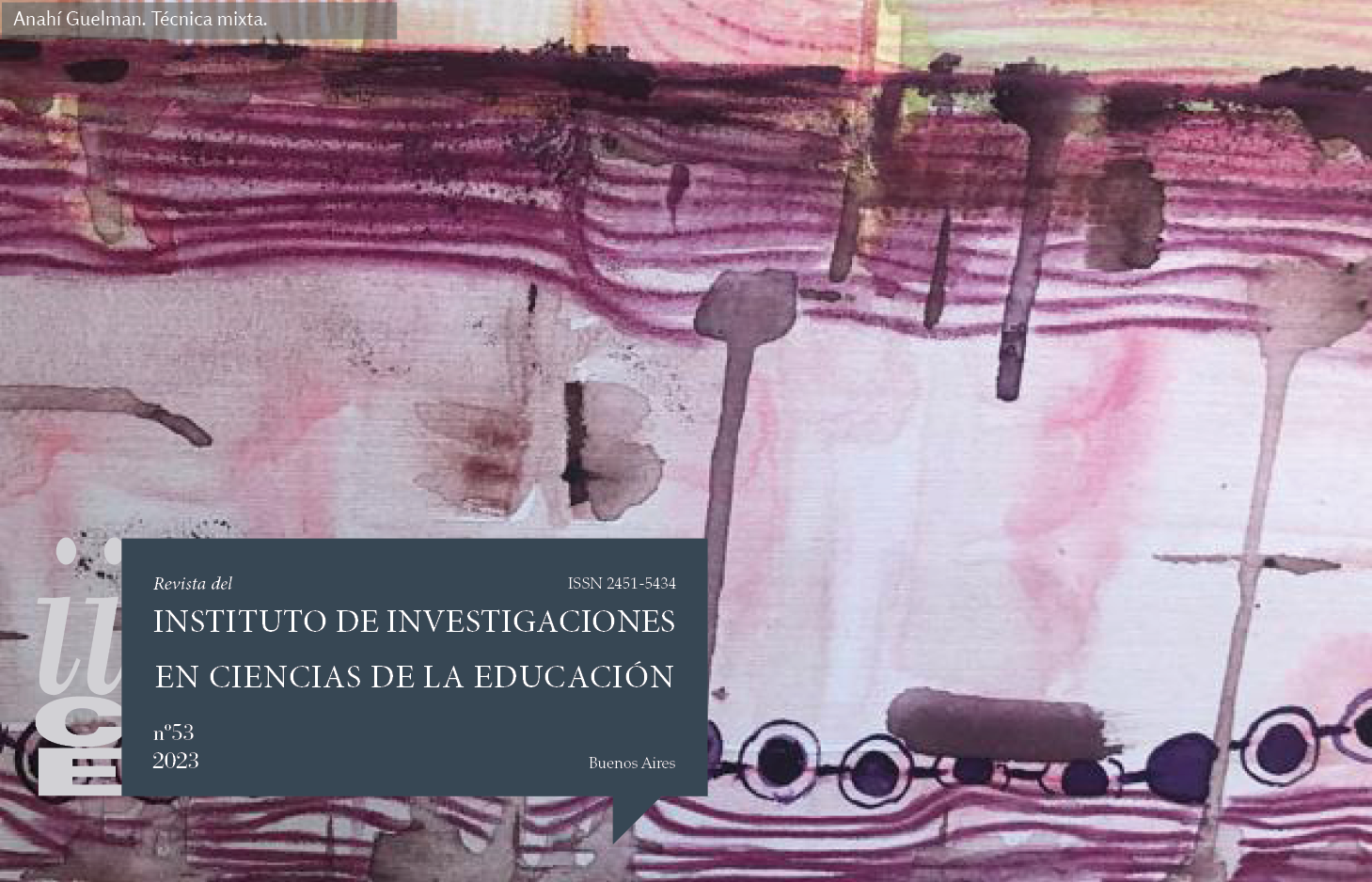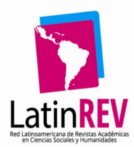Procesos grupales, cohesión y heterogeneidad en un dispositivo de Danza Movimiento Terapia virtual para docentes en pandemia
Resumo
El siguiente trabajo resulta del análisis del proceso grupal que tuvo lugar en un dispositivo de Danza Movimiento Terapia (DMT) virtual —“Aulabramantes”— realizado con 9 docentes durante la pandemia por COVID-19, en Buenos Aires, durante un trimestre, al comienzo de 2021. El objetivo fue dar cuenta del proceso grupal. A partir del registro en video de los encuentros grupales y de entrevistas individuales a las participantes se realizó un análisis cualitativo que combinó el análisis de contenido con el método comparativo constante. Los resultados nos han permitido caracterizar la tarea imaginaria del grupo a través de la metáfora del zurcido grupal. Hemos descrito el proceso en términos de aquello que le proporcionó cohesión al grupo a través de la identificación mutua y de diferentes formas de trabajo con la diferencia —la grupalización, la fusión, la multiplicación de sentidos y el diálogo con la diferencia—, que permiten encontrar lo común o dialogar con lo diferente. Se discuten los resultados a la luz de las teorías psicoanalíticas de grupos. Las conclusiones apuntan a la función de apuntalamiento que cumple un grupo ante momentos de crisis como lo han sido la pandemia y los procesos grupales para construir este grupo que sostiene.Downloads
Referências
Al Cheikh, M. E.; Tirado, M.; Ximena Carquez, X.; Guerra, I. y Camilo Artaza, C. (2018). El Proceso Grupal en la Formación en Danza Movimiento Terapia. Espacio de transformación en tiempos de incertidumbre. Algunos apuntes sobre el grupo operativo. GASi (Group Analitic Society International), 82.
Anzieu, D. (1997). La Dinámica de los grupos pequeños. Madrid, Biblioteca Nueva.
----------. (2010). El yo-piel. Madrid, Biblioteca Nueva.
Baquero, R. (2020). La torción del espacio escolar. En Dussel, I.; Ferrante, P. y Pulfer, D. (comps.). Pensar la Educación en tiempos de pandemia. Entre la emergencia, el compromiso y la espera, pp. 231-242. Buenos Aires, UNIPE.
Bardet, M. (2018). Saberes gestuales. Epistemologías, estéticas y políticas de un cuerpo danzante. Enrahonar. An international Journal of Theoretical and Practical Reason, 60: 13-28.
Bräuninger, I. (2006). Dance movement therapy group process: A content analysis of short-term DMT programs. En Koch, S. C. y Bräuninger, I. (eds.). Advances in dance movement therapy. International Perspectives and Theoretical Findings, pp. 87-103. Berlin. Logos Editors.
Bucci, L. y Faccendini, A. (2020). La violencia laboral en pandemia (moobing). Pensar la pandemia. Observatorio Social del Coronavirus 2020. Clacso. Disponible en: http://biblioteca.clacso.edu.ar/clacso/se/20200513064315/11-Bucci-Faccendini.pdf
Cardoso, P. (2012). El Grupo, la Elaboración Psíquica y la Danza. Tesis de grado. Universidad del Aconcagua. Disponible en: https://repositoriosdigitales.mincyt.gob.ar/vufind/Record/BDUDA_494e94dca0ba9d08b0a9d5e07c42e54c
Cevallos, A.; Mena, P. y Reyes, E. (2021). Salud mental docente en tiempos de pandemia por covid-19. Investigación & Desarrollo, [S.l.], 14(1): 134-140.
Chendo, M. (2020). Educación 2020: los migrantes forzados. Iberoamérica social. Disponible en: //iberoamericasocial.com/educacion-2020-los-migrantes-forzados/
Deleuze, G. (2001). Spinoza: Filosofía Práctica. Barcelona, Tusquests.
Drozdek, B. (2014). If you want to go fast, go alone, if you want to go far, go together: On context-sensitive group treatment of asylum seekers and refugees by war and terror. (Dissertation). Países Bajos, Utrecht University. Disponible en: https://dspace.library.uu.nl/handle/1874/ 288706 (disertación)
Etchevers, M. J.; Garay, C. J.; Putrino, N.; Grasso, J.; Natalí, V. y Helmich, N. (2020). Salud Mental en cuarentena. Relevamiento del impacto psicológico a los 7-11 y 50-55 días de la cuarentena en población argentina. Observatorio de Psicología Social Aplicada. Facultad de Psicología. Disponible en: https://aduba.org.ar/wp-content/uploads/2020/05/20-Informes-OPSA-COVID-19.pdf
Fernandez, A. M. (2007). Las lógicas colectivas. Imaginarios, cuerpos y multiplicidades. Buenos Aires, Biblos.
Fischman, D. (2008). Relación terapéutica y empatía kinestésica. En Wengrower, H. y Chaiklin, S. (eds.). La vida es danza, pp. 81-96. Barcelona, Gedisa.
Garcia-Medrano, S. (2021). Screen–bridges: dance movement therapy in online contexts. Body, Movement and Dance in Psychotherapy, 16(1):64-72.
Glaser, B. y Strauss, A. (1967). The discovery of grounded theory. Chicago, Aldine Publishing Company.
Gray, D. E. (2013). Doing research in the real world. Londres, Sage Publications.
Harris, D. A. (2007). Dance/movement therapy approaches to fostering resilience and recovery among African adolescent torture survivors. Torture, 17(2):134-155.
Kaes, R. (1992). Apuntalamiento múltiple y estructuración del psiquismo. Revista de psicología y psicoterapia de grupo, 2(15).
----------. (1996). El grupo y el sujeto del grupo. Buenos Aires, Amorrortu.
----------. (2010). Un singular plural. El psicoanálisis ante la prueba del grupo. Buenos Aires, Amorrortu.
Klein, M. (2015). Amor, culpa y reparación. Buenos Aires, Paidós.
Koren, B. S. (1994). A concept of “body knowledge” and an evolving model of “movement experience”: Implications and application for curriculum and teacher education. American Journal of Dance Therapy, 16(1): 21-48.
Krippendorf, K. (1990). Método de análisis de contenido: Teoría y Práctica. Buenos Aires, Paidós.
Laban, R. (1987). El dominio del movimiento. Madrid, Fundamentos.
Lacan, J. (1966). El Seminario. Libro 14: La lógica del fantasma. Clases del 16 de noviembre de 1966 y 7 de diciembre de 1966. Inédito.
Le Breton, D. (1995). Antropología del cuerpo y modernidad. Buenos Aires, Nueva Visión.
Lee, T. C.; Lin, Y. S.; Chiang, C. H. y Wu, M. H. (2013). Dance/movement therapy for children su¡ering from earthquake trauma in Taiwan: A preliminary exploration. The Arts in Psychotherapy, 40: 151-157.
Levine, B.; Land, H. y Lizano, E. L. (2015). Exploring dance/movement therapy to treat women with posttraumatic stress disorder. Critical SocialWork, 16(1): 40-57.
Morin, E. (1996). Introducción al pensamiento complejo. Barcelona, Gedisa.
Muñoz, C. F.; Correa, C. M. y Matajudios, J. F. (2020). Burnout syndrome and coping strategies in early childhood teachers. Revista Espacios, 41(37): 145-158.
Panhofer, H. (2005). Cuando las palabras no son suficientes. Fundamentos de la Danza Movimiento Terapia (DMT). Terapias creativas. Salamanca, Universidad de Salamanca.
Pinilla Romero, E. (2019). DMT y stress docente. Una revisión teórica-empírica y una propuesta a través de la inteligencia y la DMT. Tesina para el Máster en Danza Movimiento Terapia. Barcelona, Departamento de Psicología Clínica y de Salud, Universidad Autónoma de Barcelona (UAB). Disponible en: https://ddd.uab.cat/record/203077
Quiroga, A. (1986). El grupo sostén y determinante del psiquismo. Trabajo presentado en el Congreso Internacional de Grupos, Zagreb, Yugoslavia. Disponible en: https://www.intersubjetividad.com.ar/el-grupo-sosten-y-determinante-del-psiquismo/
----------. (2005). Crisis, procesos sociales, sujeto y grupo. Buenos Aires, Nueva Visión.
Romero Corral, G. (2021). La DMT con mujeres solicitantes de Asilo: Una exploración psicosocial. Tesis de posgrado. UAB. Disponible en: https://www.recercat.cat/handle/2072/520286
Souto, M. (2000). Las formaciones grupales en la escuela. Buenos Aires, Paidós.
----------. (2010). La investigación clínica en Ciencias de la Educación. Revista del IICE, https://ddd.uab.cat/record/160572?ln=ca: 57-74.
Stern, D. (1991). El mundo intersubjetivo del infante. Buenos Aires, Paidós.
Suteba (2020). Encuesta provincial de trabajo docente en contexto de aislamiento. Disponible en: //www.suteba.org.ar/encuesta-provincial-de-trabajo-docente-en-contexto-de-aislamiento-se-presentaron-los-resultados-20015.html
Terigi, F. (2020). Aprendizaje en el hogar comandado por la escuela: cuestiones de descontextualización y sentido. En Dussel, I.; Ferrante, P. y D. Pulfer, D. (comps.). Pensar la Educación en tiempos de pandemia, pp. 243-252. Buenos Aires, UNIPE.
Unicef (2020). Encuesta COVID-19. Encuesta de Percepción y Actitudes de la Población. Impacto de la pandemia COVID-19 y las medidas adoptadas por el gobierno sobre la vida cotidiana. Informe sectorial: educación. Buenos Aires, Unicef Argentina. Disponible en: https://www.unicef.org/argentina/media/8056/file/Covid19-EncuestaRapidaInformeEducacion.pdf
Verreault, K. (2017). Dance/Movement therapy and resilience building with female asylum seekers and refugees: a phenomenological practice based research. Intervention, 15(2): 120-135.
Wengrower, H. (2008). El proceso creativo y la actividad artística por medio de la danza y el movimiento. En Wengrower, H. y Chaiklin, S. (eds.). La vida es danza, pp. 39-58. Barcelona, Gedisa.
Winnicot, D. (1982). Realidad y juego. Barcelona, Gedisa.
Zelmanovich, P. (2020). Deseo de saber: haciendo zoom en lo emergente. En Dussel, I.; Ferrante, P. y Pulfer, D. (comps.). Pensar la Educación en tiempos de pandemia, pp. 325-336. Buenos Aires, UNIPE.














